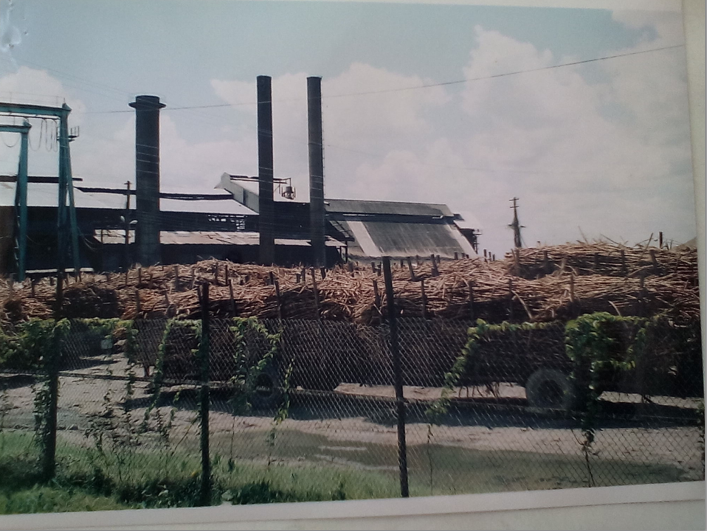Activity: Panel presentation with discussion
Host: Moray House Trust
Date: Friday 5th February

Moray House Trust extends thanks to all those who attended and participated in the panel event on Friday evening about the proposed closure of Wales Sugar Estate and contributed to an informative and stimulating discussion about the topic. Speakers included a former GuySuCo manager with 35 service, a cane farmer with 35 years experience in sugar, a plant foreman who has worked at Wales for 30 years and a former Chairman of GuySuCo. Mr Ralph Ramkarran was the moderator for the event.
It emerged, in the course of the first presentation, that there are about 800 private cane farmers engaged in farming at Wales and that they account for over 50% of the estate’s cane supply. The yield from cane grown on the estate by GuySuCo dropped from 68 TCH (tonnes cane per hectare) to 51 TCH between 2008 and 2015. During the same period, the private farmers increased their supply from 7,700 to 10,200 tonnes, that is, from 31% to 51 % of the total supply.
Mr Derrick Venture of La Retraite / Stanleytown Cane Farmers Association, the largest cane farming unit in the area, expressed concern on behalf of his fellow farmers at the proposed plans to move canes to Uitvlugt for processing. Major obstacles include the proposed route, the double handling of the cut cane and the loss of sucrose content in the cane as a result. He said that, when news of GuySuCo’s plans were first revealed in January 2016, he wrote a letter to President Granger outlining the farmers’ concerns. He has not yet received a response. The cane farmers have indicated that it is within their ability to take over the entire production of cane at Wales in time.
Mr Mark Khan, a plant foreman at Wales Factory, challenged some of the information being circulated (to residents of the area in leaflets emanating from various ministries) and in the press. He explained, for example, that the allegation that the plant machinery at the factory is ‘old’ is misleading as all estates, (with the exception of Skeldon) have machines which are over half a century old. Sugar factories are built to run for hundreds of years. A recent ‘steam’ test, conducted by Mr Khan and his colleages, showed the plant to be in good working order though there are parts that are needed. Mr Khan invited anyone to visit the factory for a demonstration. He also explained that there are 32 bridges on the estate. All are in good repair and eleven are made of concrete. This can also be verified by touring the estate. Mr Khan reminded the audience that he and many of his fellow workers have mortgages and other financial commitments that cannot simply be suspended indefinitely.
Whatever transition is planned, there are likely to be significant costs associated with it. Mr Jai Petam, a former GuySuCo manager, raised the question of who would fund the development of cane lands into other crops or any other diversification ventures. A conservative estimate of the cost of severance (based on 1500 workers receiving an average of G$ 15,000 per week and with a service of average 15 years) would be G$ 675 million.
Mr Chris Ram pointed out that all sugar industries across the world are subsidised so that the world market price is not a ‘true comparison’ for what it costs to produce sugar anywhere. He also noted that while the Commission of Inquiry report included a financial assessment and projections, no-one appeared to have undertaken an economic assessment. Several speakers concurred that this was a vital element of any plans involving such significant numbers of workers and their dependants. There are about 1800 workers employed at Wales Sugar Estate. There are also 800 cane farmers in the area.
Mr Vickram Oditt proposed the formation of a public company, Wales Sugar Estate Inc [WSEI], with shareholders including the sugar workers, the cane farmers, the Guyanese public, pension funds, the workers’ unions and others. If 1 million shares were sold at a cost of G$ 5000 each, this would raise G$ 5 billion in capital for the venture. WSEI would lease the estate, factory, lands and equipment from the Government of Guyana / GuySuCo for G$1 per year for a 25 year period, with an option to renew for a further 25 years. WSEI would not own any of the lands and therefore could not dispose of them. The company would continue the cultivation and production of sugar and by-products at Wales and invest in the field and factory equipment necessary to produce 3 or 4 times the 2015 production.
Mr Oditt stressed that, whatever the outcome of this proposal, it was vital to continue field operations at Wales throughout 2016 (tilling, replanting and other husbandry) to ensure that Wales was still a functional estate at the end of the year. He also pointed out that at present hundreds of workers are turning up to work out with nothing to do. There is an 11 month variety of cane that could be planted and harvested at year end to keep workers occupied and the factory productive.
There were many comments and questions from the audience at the end of the presentations. The most poignant were those in which several workers from Wales expressed their anguish and uncertainty about the present state of limbo.
In the interests of offering a plurality of views, Moray House Trust invited GuySuCo to field a representative on the panel. The Trust also invited the management of GuySuCo, the board of GuySuCo, several ministers and the private sector to attend the event. The Trust was disappointed to note an apparent lack of willingness to engage, particularly on the part of those who hold public office or who are paid by the public purse.
Moray House Trust was founded on the ethos that “a culture thrives and develops where ideas circulate and are robustly debated and interrogated.” On occasions such as these, the Trust hopes to provide a forum for the civil exchange of ideas and opinions. On Friday evening, thanks to all those who participated and attended, we took another small step towards that goal.
Video Clips
The Closure of Wales Estate: are there alternatives ?
A sampling of the presentations.
You Tube Clip: https://youtu.be/NiJ84XO0dSo
An Overview: Jairam Petam, who worked for GuySuCo for 35 years until 2015, presented an overview of Wales Sugar Estate and environs.
You Tube Clip: https://youtu.be/d_jp2uGfDIA
A Cane Farmer Speaks: Mr Derrick Venture, representative of La Retraite / Stanleytown Cane Farmers Association
You Tube Clip: https://youtu.be/1R1MdYWAu_Y
A Wales Factory Worker Speaks: Mr Mark Khan, a plant foreman at Wales Sugar Estate refuted some of the claims made in the media about the condition of the estate.
You Tube Clip: https://youtu.be/sYE-QlPm2qQ
An Analysis: Chris Ram, an accountant, analysed the Commission of Inquiry’s findings, GuySuCo’s statements about Wales, common misconceptions in the debate on sugar and possibilities for the future .
You Tube Clip: https://youtu.be/r5l0M4U6jLM
An Alternative: Vick Oditt, Chairman of the Board of GuySuCo for a decade (1993 – 2003) presents an alternative to closure, the formation of a public company, Wales Sugar Estate Inc.
You Tube Clip: https://youtu.be/dtQpUle4P94

